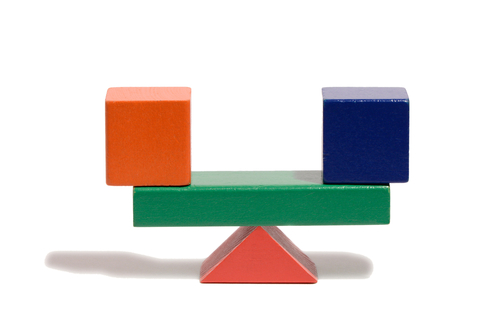In the picture, a girl is watching her dad fix her bicycle tyre using a spanner. The spanner exerts a turning force on the axle nut and if the force is big enough, it can unscrew the nut.

Turning forces work on a pivot (see diagram). When the weights of the orange and blue blocks are equal (equal forces) and the green block rests on the red pivot at exactly half its length, then the green block, with orange and blue squares on, balances on the pivot. However, if we were to take one of the squares off the green rectangle, the forces would turn it to the other side. For example, if we take the blue square away, then the weight of the orange one would not be balanced, so the green block would turn anticlockwise with the orange block on the left side going down.

The effect of the force depends on the distance from the pivot. The effect is called moment. The moment of a turning force is given by the following formula:
moment = force applied × distance from a pivot
Moment is measured in newton centimetres (Ncm) or newton metres (Nm). In order to increase the effect of a turning force, one can either increase the force itself by pulling or pushing harder, or one can increase the distance from the pivot.
Let's have a go at some questions now.








